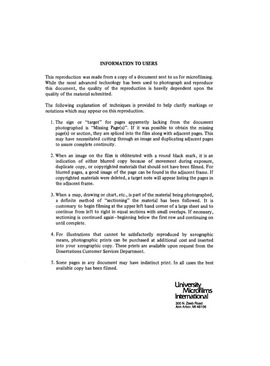| dc.contributor.author | Sheridan, Kristin Mary, | en_US |
| dc.date.accessioned | 2013-08-16T12:28:47Z | |
| dc.date.available | 2013-08-16T12:28:47Z | |
| dc.date.issued | 1982 | en_US |
| dc.identifier.uri | https://hdl.handle.net/11244/5058 | |
| dc.description.abstract | Present efforts to train counselors in cross-cultural skills do not address issues of White counselors' own racism. This dissertation describes a White awareness training program for counselors based on Katz' (1978) model. Twenty-eight participants completed training which covered the six stages of White awareness: (1) defining racism and prejudice, (2) examining institutional racism, (3) dealing with feelings, (4) examining cultural racism, (5) examining individual racism, and (6) developing action strategies. | en_US |
| dc.description.abstract | Student evaluations were obtained at the end of the course. Students generally rated the course and the instructors as above average. Low-rated questions indicated concern about grades, a high course workload, and a view on the part of some students that the instructors were not respectful. The experiential nature of the training and the threatening nature of the content presented are discussed. | en_US |
| dc.description.abstract | Videotaped vignettes were developed of clients presenting culture- or race-related counseling issues. Twenty-five participants viewed these vignettes at the beginning and the end of training. Following each vignette, participants responded to a questionnaire asking what they would say next and how they would define the client's problem. Responses to the first question were scored according to whether attending or expressive skills were used. Responses to the second question were scored according to the focus of the diagnosis. Hypothesized increases in the use of expressive skills from the beginning to the end of training were not found. Hypothesized changes over time in focus of the problem (from the individual toward the societal) were found only on responses to one vignette. | en_US |
| dc.description.abstract | The study also examined the variable of locus of control. Participants completed Rotter's (1966) Internal-External Locus of Control scale. Comparison of I-E scores of White (n = 19) and minority (n = 6) participants showed a significant difference between scores of these two groups on the pretest but not on the posttest. No significant main effects were found for locus of control on responses to either question on the vignettes. Difficulties in interpreting these findings and in developing adequate dependent measures, the exploratory nature of the study, and areas for future research are discussed. | en_US |
| dc.format.extent | ix, 335 leaves : | en_US |
| dc.subject | Psychology, Clinical. | en_US |
| dc.title | Counseling across cultures : | en_US |
| dc.type | Thesis | en_US |
| dc.thesis.degree | Ph.D. | en_US |
| dc.thesis.degreeDiscipline | Jeannine Rainbolt College of Education | en_US |
| dc.note | Source: Dissertation Abstracts International, Volume: 43-09, Section: B, page: 3043. | en_US |
| ou.identifier | (UMI)AAI8302463 | en_US |
| ou.group | Jeannine Rainbolt College of Education | |
